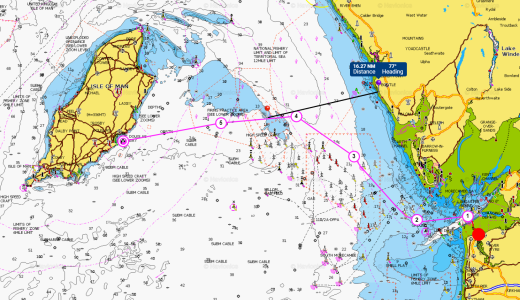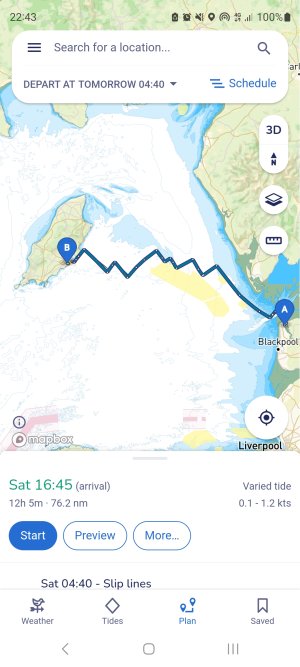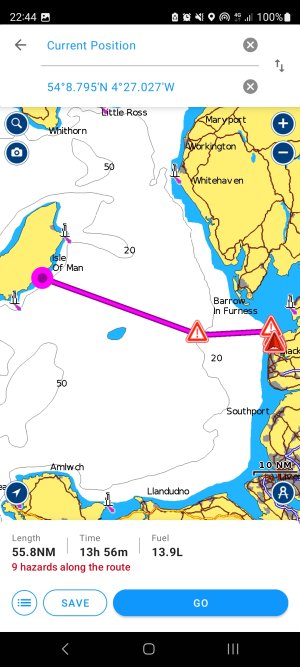ColourfulOwl
Member
I was having a conversation with someone today about my plans to visit the Isle of Man for my birthday week in August. My boat is currently in Fleetwood. They asked if that journey would be my first time 'offshore' sailing.
I personally would of classified this as coastal, but It kind of raised the question of, what do you actually classify as Offshore? How far from land do you need to actually be, to be offshore?
With the route that I'll likely take (weather depending - it might make more sense to go south of the windfarm), the furthest away from land I'll be at any one time is about 16nm.

Interested in hearing peoples thoughts on this
I personally would of classified this as coastal, but It kind of raised the question of, what do you actually classify as Offshore? How far from land do you need to actually be, to be offshore?
With the route that I'll likely take (weather depending - it might make more sense to go south of the windfarm), the furthest away from land I'll be at any one time is about 16nm.

Interested in hearing peoples thoughts on this



